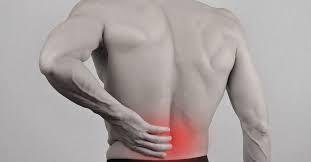Fast and Easy Home Remedies for Muscle Strain Relief
Muscle strains are a common issue that can occur due to overexertion, improper lifting techniques, sudden movements, or even poor posture.

Muscle strains are a common issue that can occur due to overexertion, improper lifting techniques, sudden movements, or even poor posture. Whether you’re an athlete, a fitness enthusiast, or someone who simply overdid it during a weekend project, muscle strain can be painful and limit your mobility.
The good news is that you don’t always need to rush to a doctor or rely on medications for relief. Several fast and easy home remedies can help alleviate pain, reduce inflammation, and promote healing. In this guide, we’ll explore effective, natural ways to relieve muscle strain and get you back on your feet.
Understanding Muscle Strain
Before diving into remedies, it’s important to understand what a muscle strain is. A muscle strain, also known as a pulled muscle, occurs when muscle fibers are overstretched or torn. This can happen in any muscle but is most common in the back, neck, shoulders, legs, and hamstrings. Symptoms include pain, swelling, stiffness, and difficulty moving the affected area.
Mild to moderate strains can often be treated at home, while severe strains may require medical attention. If you experience intense pain, inability to move the muscle, or significant swelling, consult a healthcare professional.
Immediate Steps to Take After a Muscle Strain
When you first notice a muscle strain, acting quickly can prevent further damage and speed up recovery. Follow these steps:
-
Rest the Affected Area: Avoid using the strained muscle as much as possible. Continuing to strain it can worsen the injury.
-
Apply Ice: Use an ice pack or a bag of frozen vegetables wrapped in a cloth to reduce swelling and numb the pain. Apply for 15-20 minutes every hour for the first 48 hours.
-
Compress the Area: Use an elastic bandage or compression wrap to minimize swelling and provide support.
-
Elevate the Muscle: If possible, raise the injured area above heart level to reduce swelling.
Once you’ve taken these initial steps, you can incorporate the following home remedies to further ease discomfort and promote healing.
1. Epsom Salt Soak
Epsom salt, or magnesium sulfate, is a popular remedy for muscle pain and strain. It helps relax muscles, reduce inflammation, and improve circulation.
How to Use:
-
Fill a bathtub or large basin with warm water.
-
Add 1-2 cups of Epsom salt and stir until dissolved.
-
Soak the affected area for 15-20 minutes.
-
Repeat 2-3 times a week for best results.
2. Heat Therapy
After the first 48 hours, when the initial swelling has subsided, heat therapy can help relax tight muscles and improve blood flow to the area.
How to Use:
-
Use a heating pad, warm towel, or hot water bottle.
-
Apply heat to the strained muscle for 15-20 minutes at a time.
-
Avoid using heat if the area is still swollen or inflamed.
3. Gentle Stretching and Movement
While rest is crucial, gentle stretching and movement can prevent stiffness and promote healing. Avoid overstretching or pushing through pain.
How to Use:
-
Perform slow, controlled stretches for the affected muscle.
-
Focus on light movements like rotating your shoulders or flexing your ankles.
-
Stop immediately if you feel sharp pain.
4. Turmeric and Ginger Anti-Inflammatory Drink
Turmeric and ginger are natural anti-inflammatory agents that can help reduce pain and swelling.
How to Use:
-
Boil 1 cup of water and add 1 teaspoon of turmeric powder and 1 teaspoon of grated ginger.
-
Let it simmer for 10 minutes, then strain.
-
Add honey or lemon for taste and drink 1-2 times daily.
5. Massage with Essential Oils
Massaging the strained muscle can improve blood flow and reduce tension. Adding essential oils like lavender, peppermint, or eucalyptus can enhance the soothing effect.
How to Use:
-
Mix a few drops of essential oil with a carrier oil like coconut or olive oil.
-
Gently massage the mixture into the affected area using circular motions.
-
Avoid applying too much pressure, especially if the muscle is tender.
6. Apple Cider Vinegar Compress
Apple cider vinegar has anti-inflammatory properties that can help reduce swelling and pain.
How to Use:
-
Mix equal parts of apple cider vinegar and warm water.
-
Soak a cloth in the mixture and apply it to the strained muscle.
-
Leave it on for 15-20 minutes and repeat as needed.
7. Arnica Gel or Cream
Arnica is a natural remedy known for its ability to reduce pain, swelling, and bruising.
How to Use:
-
Apply a small amount of arnica gel or cream to the affected area.
-
Gently massage it into the skin.
-
Use 2-3 times daily until the pain subsides.
8. Stay Hydrated
Dehydration can worsen muscle cramps and stiffness. Drinking plenty of water helps flush out toxins and keeps your muscles hydrated.
How to Use:
-
Aim to drink at least 8-10 glasses of water daily.
-
Include electrolyte-rich drinks like coconut water if you’ve been sweating heavily.
9. Potassium-Rich Foods
Potassium helps regulate muscle function and can prevent cramps and stiffness.
How to Use:
-
Incorporate potassium-rich foods like bananas, oranges, spinach, and sweet potatoes into your diet.
-
Consider a potassium supplement if recommended by your doctor.
10. Rest and Sleep
Your body heals most effectively during rest and sleep. Ensure you’re getting enough quality sleep to support recovery.
How to Use:
-
Aim for 7-9 hours of sleep per night.
-
Use pillows to support the injured area and maintain a comfortable sleeping position.
11. Over-the-Counter Pain Relievers
While natural remedies are preferred, over-the-counter pain relievers like ibuprofen or acetaminophen can provide temporary relief.
How to Use:
-
Follow the dosage instructions on the packaging.
-
Avoid prolonged use unless advised by a doctor.
12. Yoga and Light Exercise
Once the pain has subsided, gentle yoga or light exercise can help restore flexibility and strength.
How to Use:
-
Start with simple poses like child’s pose or cat-cow stretch.
-
Gradually increase intensity as your muscle heals.
13. Cayenne Pepper Paste
Cayenne pepper contains capsaicin, which has pain-relieving properties.
How to Use:
-
Mix 1 teaspoon of cayenne pepper powder with 2-3 teaspoons of olive oil.
-
Apply the paste to the strained muscle and leave it on for 15-20 minutes.
-
Rinse off with warm water.
14. Aloe Vera Gel
Aloe vera is known for its soothing and anti-inflammatory properties.
How to Use:
-
Apply fresh aloe vera gel directly to the affected area.
-
Leave it on for 20-30 minutes before rinsing off.
-
Repeat 2-3 times daily.
15. Proper Posture and Ergonomics
Poor posture can strain muscles and delay recovery. Pay attention to your posture, especially if you spend long hours sitting or standing.
How to Use:
-
Sit with your back straight and shoulders relaxed.
-
Use ergonomic furniture and take frequent breaks to stretch.
When to Seek Medical Attention
While most muscle strains can be treated at home, certain symptoms require professional care. Seek medical attention if you experience:
-
Severe pain that doesn’t improve with home remedies.
-
Inability to move the affected muscle.
-
Numbness or tingling in the area.
-
Significant swelling or bruising.
Preventing Future Muscle Strains
Prevention is always better than cure. Here are some tips to avoid muscle strains:
-
Warm-Up Before Exercise: Always warm up before physical activity to prepare your muscles.
-
Stretch Regularly: Incorporate stretching into your daily routine to maintain flexibility.
-
Use Proper Techniques: Lift heavy objects with your legs, not your back, and avoid sudden movements.
-
Stay Active: Regular exercise strengthens muscles and reduces the risk of injury.
-
Listen to Your Body: Avoid pushing yourself too hard and take breaks when needed.
Conclusion
Muscle strains can be painful and inconvenient, but with the right approach, you can find relief and speed up recovery. By combining immediate care with natural home remedies, you can reduce pain, inflammation, and stiffness without relying on medications. Remember to listen to your body, rest when needed, and take steps to prevent future injuries. If your symptoms persist or worsen, don’t hesitate to consult a healthcare professional. With patience and care, you’ll be back to your normal activities in no time!
What's Your Reaction?
















